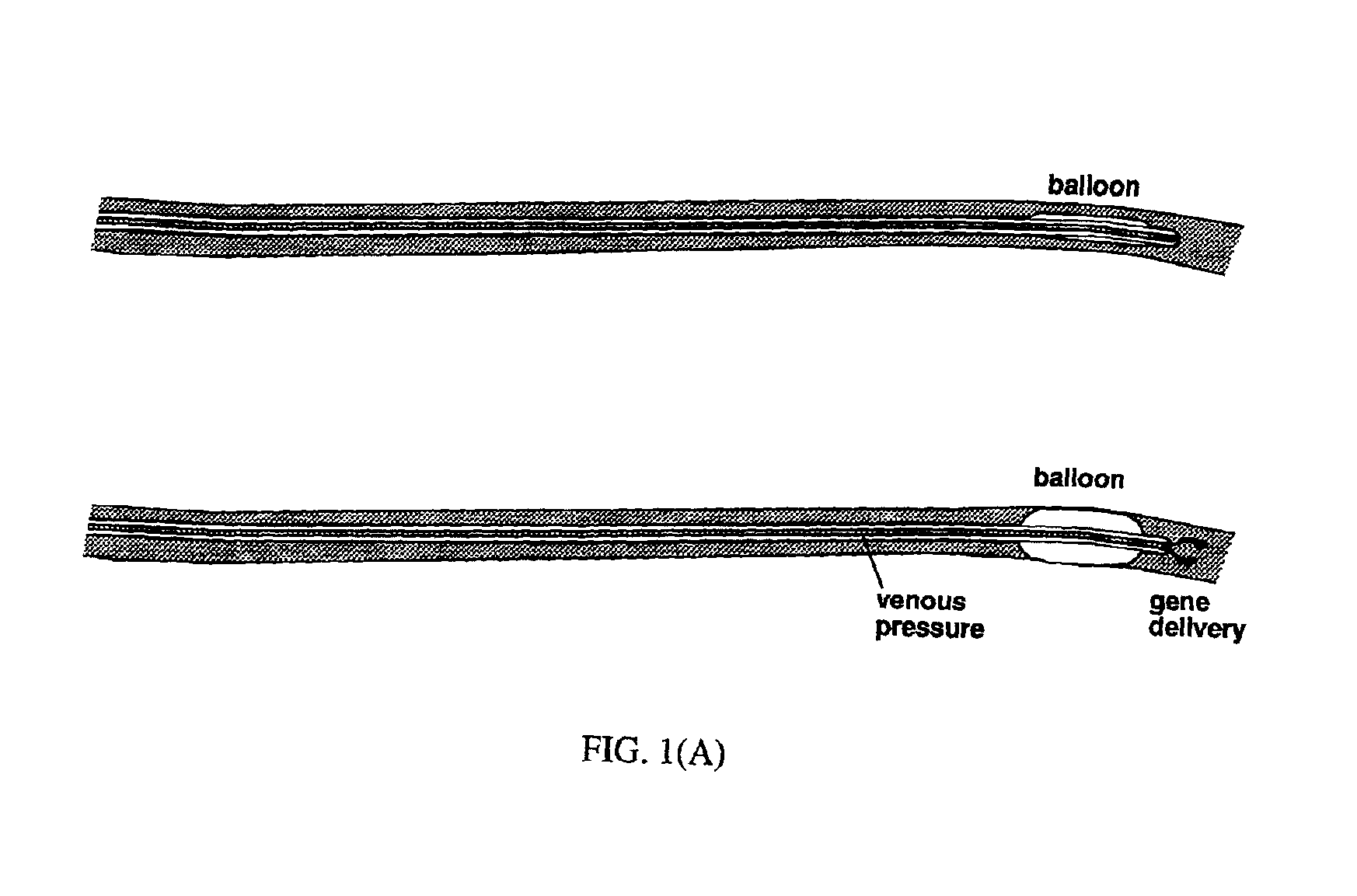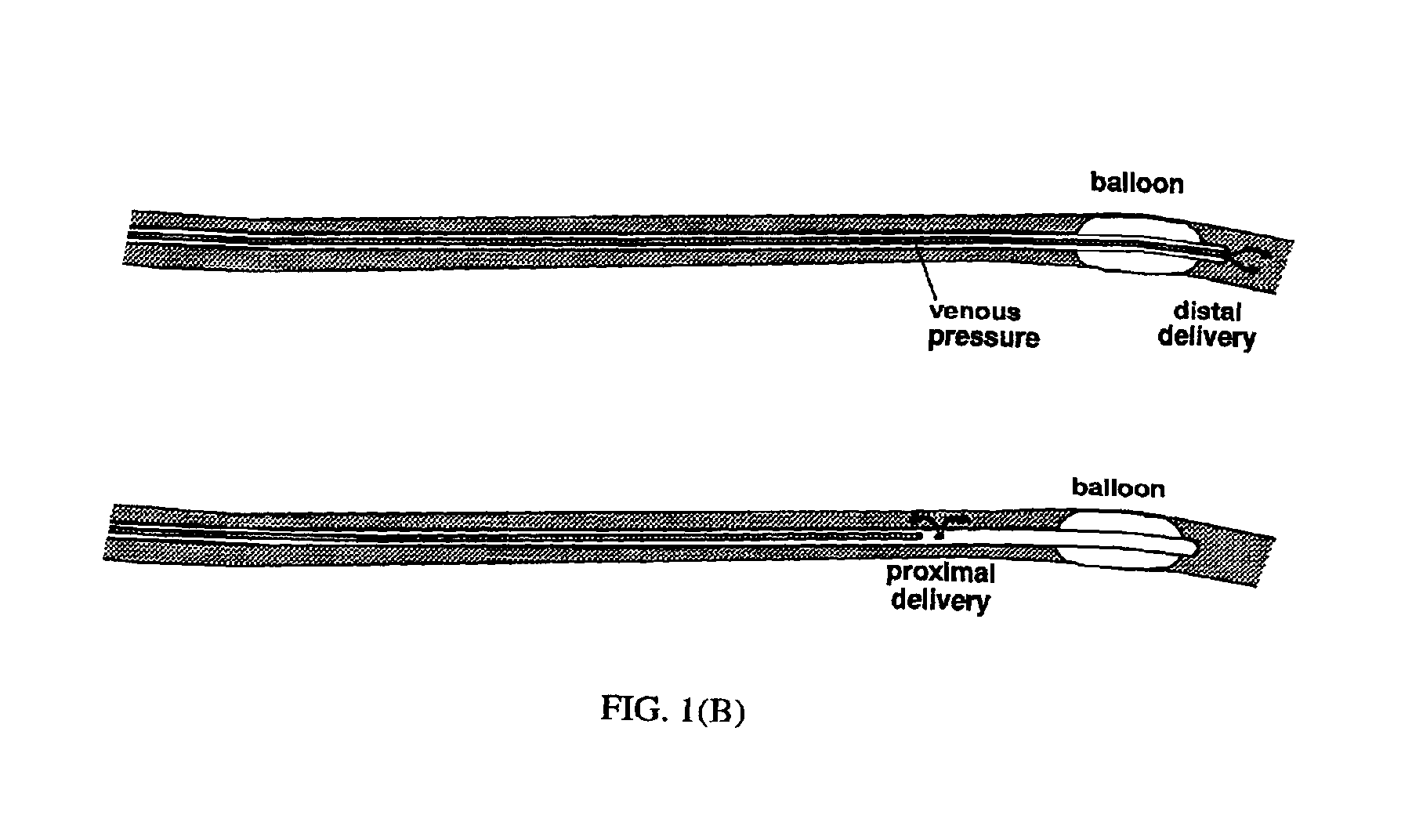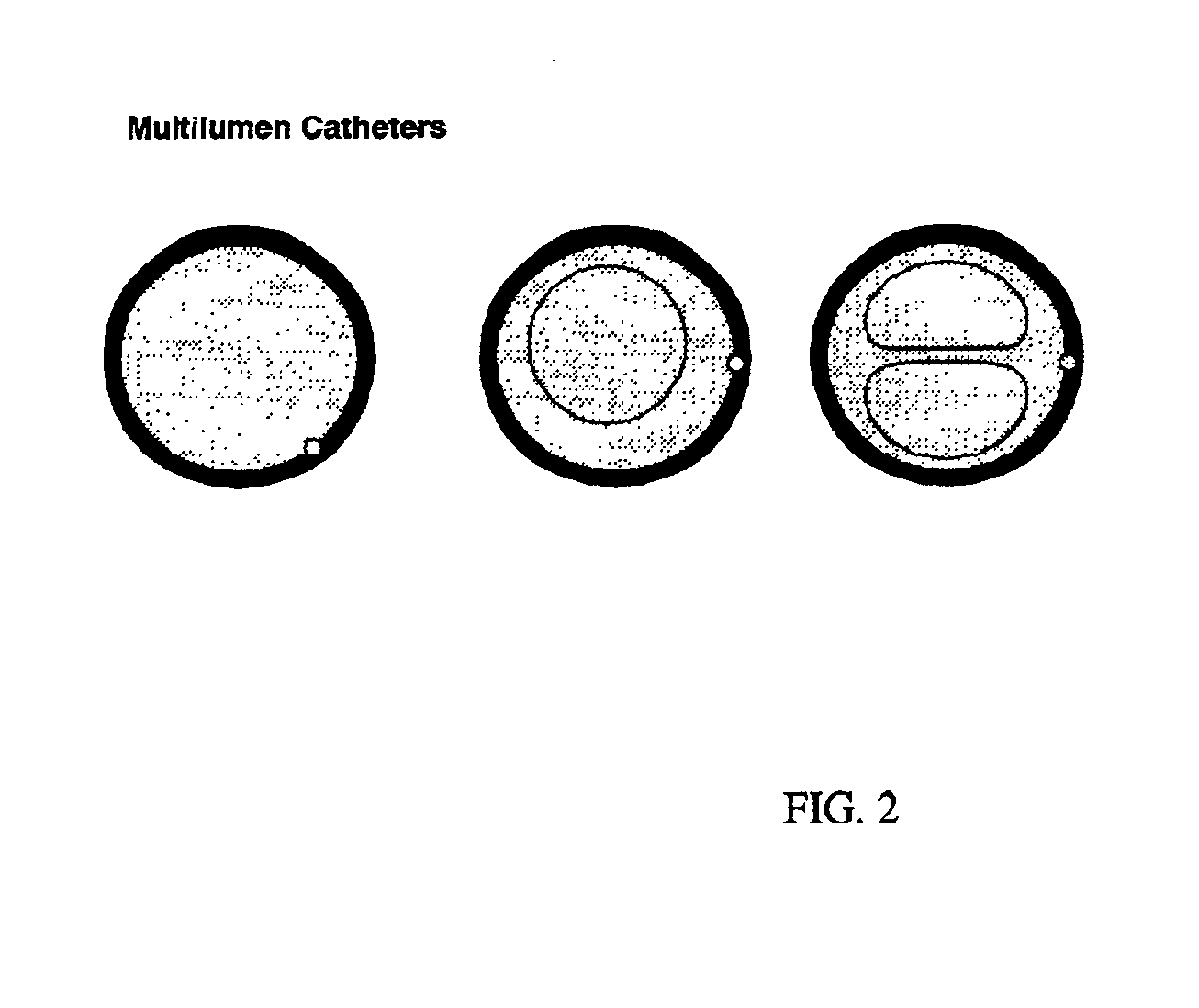Process for delivering nucleic acids to cardiac tissue
- Summary
- Abstract
- Description
- Claims
- Application Information
AI Technical Summary
Benefits of technology
Problems solved by technology
Method used
Image
Examples
example 1
[0067]In vivo luciferase expression from naked plasmid DNA transfected to a pig heart
[0068]Solutions of pCI-Luc+ were injected into coronary arteries and veins in pig heart. pCI-Luc+ is a plasmid DNA expression vector in which an optimized version of the firefly luciferase gene (Promega, Madison, Wis.) is expressed under transcriptional control of the CMV promoter (basic expression vector is pCI, Promega, Madison, Wis.). The hearts of 30-40 kg domestic pigs were accessed via a limited left thoracotomy through the fifth intercostal space. A 27-gauge needle was inserted into a left anterior descending (LAD, great cardiac) or right posterior descending (middle cardiac) vein or artery, and ligated in place. The ligation serves to keep the needle in place and to direct flow distal from the needle. The corresponding artery or vein was transiently occluded during the injection. A pre-injection into the coronary artery or vein of 6 ml papaverine solution (0.5 mg / ml) was given in 15-20 secon...
example 2
[0072]Estimation of the number of transfected cardiomyocytes following plasmid DNA delivery into a cardiac vein
[0073]Intravenous injection of pCI-LacZ was performed to determine the cell type and extent of transfection. Crysosections (10 μm) were stained for β-galactosidase expression as described before. A low percentage of transfected cardiomyocytes was detected two days following injection. No endothelial cells were found to express β-galactosidase. The percentage of β-galactosidase positive cells appears rather low for the amount of luciferase expression that was found in the same tissue samples (15 ng / g, generated by ˜10-fold less pCI-Luc+ than was used in the experiments describe in example 1; in this experiment, pCI-Luc+ was co-injected with pCI-LacZ at a ratio of 1:9). The same tissue sections were also stained with hematoxyline-osin. No gross abnormalities were observed.
example 3
[0074]Plasmid DNA Delivery to Coronary Veins Via a Catheter
[0075]Gene transfer experiments were performed in 30-50 kg Yorkshire domestic swine (Sus scrofa). The pigs were sedated with telezol (20-30 mg IM), induced with pentobarbitol (250-500 mg IV), and endotracheally intubated. Anesthesia was maintained with inhaled isoflurane (0.5-3%). The right carotid artery and internal jugular vein were exposed by surgical cutdown and coronary angiography was performed. Heparin (100 U / kg, IV) was administered. A 10 Fr guiding catheter was advanced to the coronary sinus, and a 7 Fr balloon-tipped triple lumen catheter was advanced over a 0.014 inch guidewire into the cardiac vein draining the left anterior descending (great cardiac vein) or right posterior descending (middle cardiac vein) territories. Low pressure injections of diluted iodinated contrast were used, in conjunction with the coronary angiogram, to delineate the myocardial territory drained by each vein.
[0076]The larger lumen of t...
PUM
| Property | Measurement | Unit |
|---|---|---|
| Pressure | aaaaa | aaaaa |
| Volume | aaaaa | aaaaa |
| Hydrostatic pressure | aaaaa | aaaaa |
Abstract
Description
Claims
Application Information
 Login to View More
Login to View More - R&D
- Intellectual Property
- Life Sciences
- Materials
- Tech Scout
- Unparalleled Data Quality
- Higher Quality Content
- 60% Fewer Hallucinations
Browse by: Latest US Patents, China's latest patents, Technical Efficacy Thesaurus, Application Domain, Technology Topic, Popular Technical Reports.
© 2025 PatSnap. All rights reserved.Legal|Privacy policy|Modern Slavery Act Transparency Statement|Sitemap|About US| Contact US: help@patsnap.com



